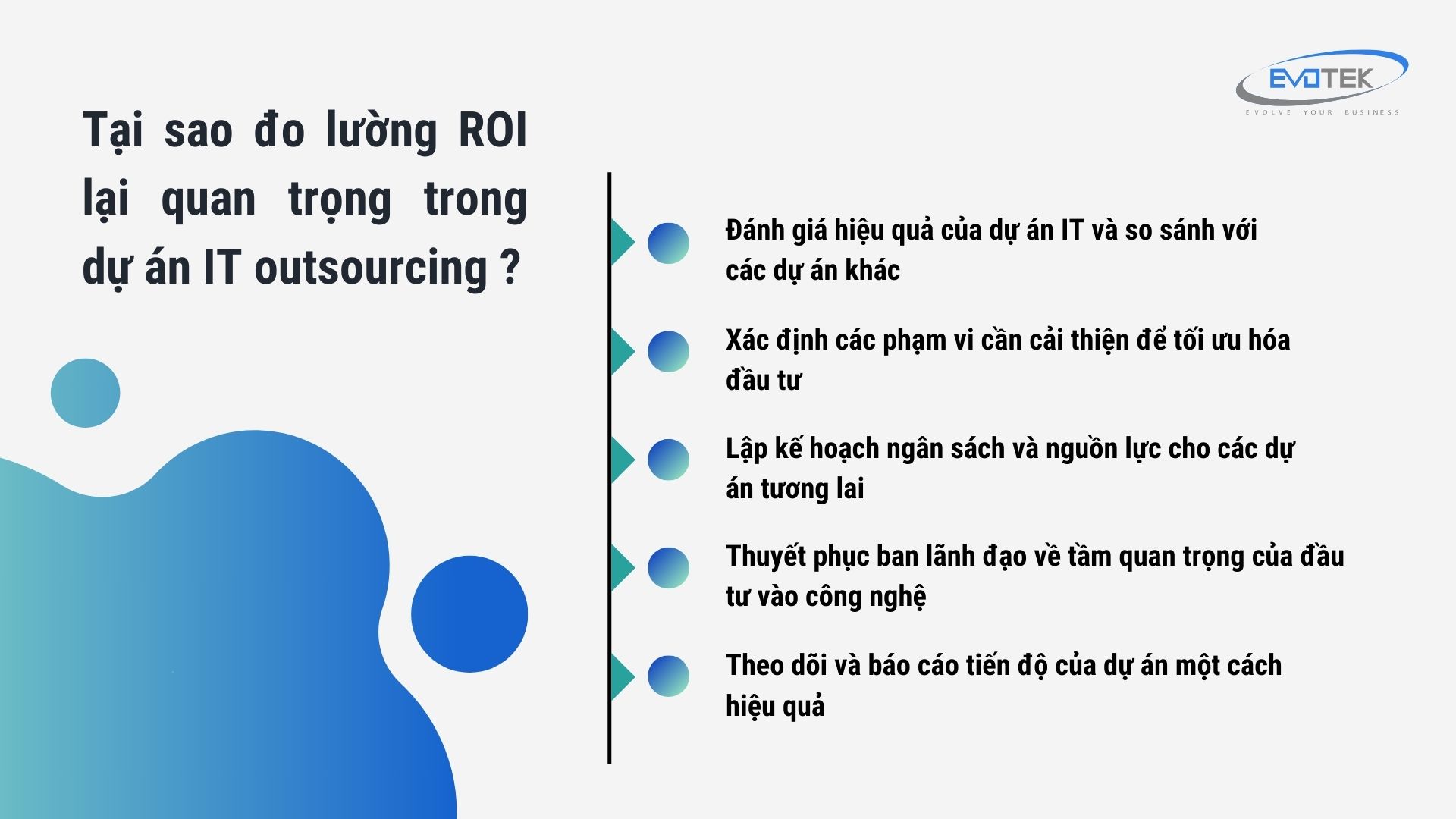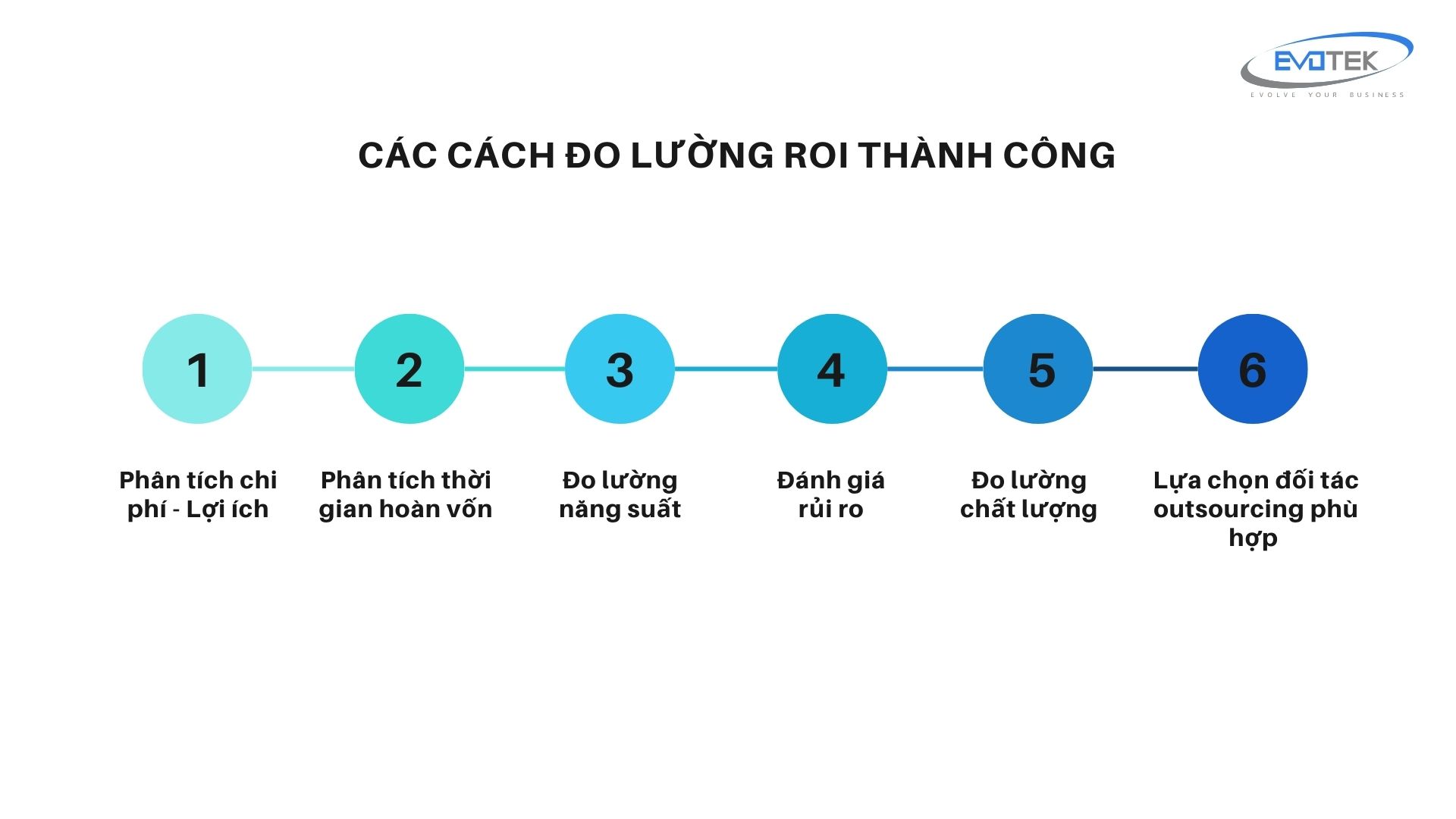In an increasingly difficult and competitive global economic context, optimizing operational efficiency and maximizing investment returns (ROI) plays an important role in the success of every business. For the information technology (IT) industry, the outsourcing trend is increasingly popular as a solution to reduce costs, increase productivity and access high-quality human resources. However, to ensure that IT outsourcing projects truly bring the expected economic benefits, accurately measuring ROI is a key factor.
According to a recent study by Deloitte , 71% of large businesses globally have implemented or are considering IT outsourcing strategies to optimize operations. However, only 38% of them actually measure and track ROI from outsourcing projects effectively. This shows that, although IT outsourcing is becoming popular, many businesses still have difficulty accurately evaluating the effectiveness and profits gained from outsourcing IT resources.
By effectively measuring and tracking ROI, businesses can make appropriate strategic decisions to maximize profits from IT outsourcing projects, while also helping to identify and promptly fix problems. any issues that could affect ROI. The article below will show how to measure ROI in IT outsourcing projects.
What is the ROI index in IT outsourcing projects?
Before diving into strategies and measurement methods, we need to clearly understand what ROI is in the context of IT outsourcing. ROI (Return on Investment) refers to the financial return obtained from an investment compared to the initial cost. In IT outsourcing software development, ROI represents the economic benefits that businesses gain from outsourcing IT services compared to the initial costs for the project.
Key factors affecting ROI in IT outsourcing include:
- Labor costs
- Operation and maintenance costs
- Infrastructure and technology costs
- Time to bring product to market
- Productivity and quality of the outsourcing team
- Security and compliance risks
By optimizing these factors, businesses can increase ROI from their IT outsourcing projects.
Why is measuring ROI important in IT outsourcing projects?

Investment in information technology often requires significant resources, including costs for hardware, software, personnel and other costs. Therefore, tracking and evaluating ROI is very important to ensure that a business’s investment is used effectively and brings economic benefits. In addition, measuring ROI also helps technology leaders:
- Evaluate the effectiveness of IT projects and compare with other projects
- Identify areas for improvement to optimize investment
- Plan budgets and resources for future projects
- Convince management of the importance of investing in technology
- Track and report project progress effectively
How to determine ROI
Although the concept of ROI is quite simple, accurately calculating this number in an IT project can become complicated. However, following a clear process, technology leaders can effectively measure ROI. Here are the steps to take:
Determine initial investment costs
First, you need to calculate the total initial investment cost for the IT outsourcing project. This includes all costs associated with procuring, implementing and operating the project in its early stages. Some examples of these expenses include:
- Hardware costs (servers, computers, network equipment, etc.)
- Software costs (operating system, applications, licenses, etc.)
- Personnel costs (IT staff salaries, training, consulting, etc.)
- Deployment costs (installation, data migration, testing, etc.)
- Maintenance and support costs (maintenance contracts, service fees, etc.)
Estimate project benefits and revenue
Next, you need to estimate the benefits and revenue that the IT project can bring throughout its life cycle. These benefits can be monetary or non-monetary, depending on the goals of the project. Some examples of benefits and revenue may include:
- Increase revenue from selling new products/services
- Save costs from process automation
- Increase employee productivity thanks to new technology
- Improve product/service quality
- Increase competitive advantage in the market
- Enhance the image and brand of the business
How to calculate ROI
Once you have the investment costs and expected benefits, you can calculate ROI using the following formula:
ROI = (Benefits and revenue – Initial investment cost) / Initial investment cost
The result will be a percentage, indicating the level of profitability of the project compared to the initial investment amount. For example, if the ROI is 50%, this means that the project has returned half the initial investment.
Challenges in measuring ROI
While measuring ROI is important, technology leaders often face a number of challenges when applying it in practice:
It is difficult to measure non-financial benefits
Besides obvious financial benefits such as cost savings and increased revenue, many outsourcing projects also bring non-financial benefits such as increased productivity, improved quality, reduced risk, increased flexibility, and increased productivity. active and innovative. These benefits are difficult to quantify in concrete numbers, making them complicated to factor into ROI calculations. However, these benefits are extremely important and can have a lasting impact on business success. Therefore, finding the right evaluation method to incorporate these benefits into ROI calculations is a significant challenge.
Allocation of common costs
Another challenge in accurately measuring the ROI of IT outsourcing projects is allocating overhead costs fairly and equitably. In many cases, outsourcing projects will share some resources and operating costs such as infrastructure, management personnel, support software, etc. with other projects in the enterprise.
Determining the exact portion of overhead costs that need to be allocated to a specific outsourcing project is a difficult task. Inaccurate allocation can lead to errors in ROI calculations, affecting the assessment of project effectiveness. Therefore, businesses need to apply appropriate and transparent general cost allocation methods to ensure the accuracy of the ROI index.
Lack of data and figures
Collecting, tracking, and analyzing data related to the costs, benefits, performance, and risks of an outsourcing project is critical to accurately calculating ROI. However, many businesses struggle to set up effective data collection systems or fail to maintain consistent metrics tracking. Lack of reliable and complete data will lead to inaccurate estimates, seriously affecting ROI assessment. Therefore, businesses need to build a strict and systematic data management process to ensure they have enough data necessary for accurate ROI calculations.
Analyze complex data

Even when there is enough relevant data, analyzing and integrating this data to calculate ROI for an IT outsourcing project remains a significant challenge. Factors that influence ROI are often diverse, including cost, financial benefits, productivity, quality, risk, and more. Each of these factors can be measured using many different metrics, creating a large and complex volume of data. Integrating, processing, and analyzing all this data to calculate overall ROI requires advanced data analysis techniques and in-depth experience. If not handled properly, complex data can lead to inaccurate or misleading ROI assessments.
Ways to measure ROI successfully
Measuring ROI (Return on Investment) is an important factor to evaluate the success of any IT outsourcing project. By accurately tracking and analyzing ROI, businesses can determine whether outsourcing IT resources is delivering the expected benefits and economic efficiency. Here are some popular and more detailed ways to measure ROI in IT outsourcing projects:

Cost – Benefit Analysis
This method compares the initial costs of an outsourcing project, including labor, infrastructure, project management and other costs, with the resulting economic benefits such as cost savings, increase revenue or increase productivity. To calculate ROI, it is necessary to determine the total economic benefit, subtract the initial cost, then divide by the initial cost and multiply by 100%. The formula is as follows:
ROI = [(Total Benefit – Initial Cost) / Initial Cost] x 100%
For example, if the initial cost of the project is $500,000 and the economic benefits such as cost savings and increased revenue are $800,000, then the ROI would be:
ROI = [($800,000 – $500,000) / $500,000] x 100% = 60%
Payback period analysis
This is a popular method to evaluate ROI based on the time required to recover the initial cost of an outsourcing project through financial benefits. The shorter the payback period, the higher the ROI and the more effective the outsourcing project. To calculate, it is necessary to divide the initial cost by the annual net cash flow:
Payback period = Initial cost / Annual net cash flow
For example, if the initial cost is $1 million and the annual net cash flow is $250,000, the payback period would be 4 years ($1,000,000 / $250,000).
Measure productivity
Many IT outsourcing projects aim to increase productivity and operational efficiency. By tracking metrics such as time-to-market, error rates, employee productivity, and number of jobs completed, businesses can compare with pre-outsource metrics to evaluate their performance. rate of productivity improvement. From there, they can convert this improvement into financial value to calculate ROI.
For example, if before outsourcing, the time to market was 12 months and after outsourcing it was only 9 months, then this improvement can be converted into a financial benefit due to the product reaching the market sooner.
Risk assessment
One of the key benefits of IT outsourcing is minimizing security, compliance and operational risks. Assessing the potential cost of risks and comparing it with the level of risk reduction after outsourcing, businesses can convert the risk reduction into financial value to calculate ROI.
For example, if the estimated cost of a major security incident is $2 million and after outsourcing, the likelihood of an incident occurring is reduced by 80%, then the risk reduction value is $1.6 million (80% of $2 million), can be counted towards ROI.
Quality measurement
Many outsourcing projects aim to improve product or service quality. Tracking quality metrics such as number of defects, customer satisfaction, end-user reviews, and number of complaints, businesses can compare with pre-outsource metrics to gauge performance. Improve the quality. This improvement can then be converted into financial value through reduced error correction costs, increased revenue from happier customers.
Choose the right outsourcing partner
Choosing the right outsourcing partner plays an important role in ensuring an IT outsourcing project achieves high ROI. A reputable, experienced and trustworthy partner will help maximize profits by reducing risk, improving quality and ensuring the project is completed on time and on budget.
When choosing an outsourcing partner, consider factors such as the supplier’s experience and expertise, previous project portfolio and customer reviews, charging model, project management process, and reporting. reporting, the ability to expand resources and expertise, and the ability to respond to security, confidentiality and compliance issues. These factors will directly affect the quality, efficiency and risk of the outsourcing project, thereby affecting ROI.
Maintaining transparency, effective communication, and establishing a close partnership with the outsourcing service provider is also an important factor. This helps ensure any issues and challenges during project implementation are resolved promptly, thereby maximizing ROI.
If you are looking for a reputable and reliable IT outsourcing partner, Evotek is a top choice. With more than 6 years of experience in the field of IT outsourcing, Evotek provides high quality services, a team of experienced experts and professional project management processes. Choosing Evotek for your outsourcing project, you will benefit from professionalism, innovation and commitment to delivering the highest ROI.
